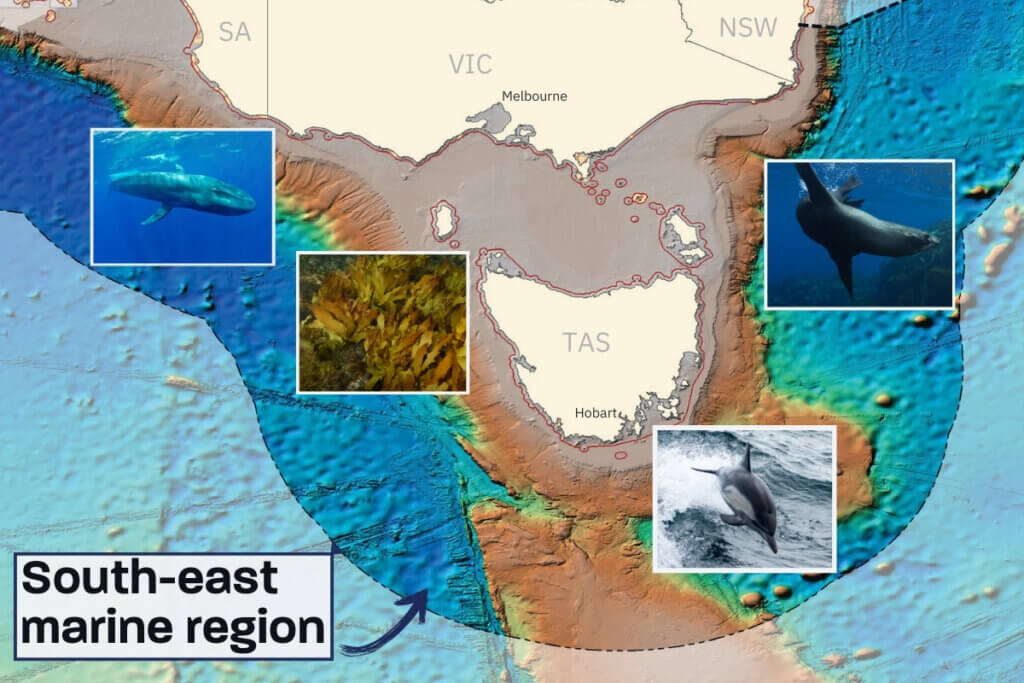Show/Hide submission letter
Dear Director Parks Australia,
[YOUR OPTIONAL PERSONAL MESSAGE WILL APPEAR HERE]
I welcome the government’s draft South-east Marine Park Network Management Plan. This is a positive step forward for the protection of the regions’ super-abundant and unique marine environment. We must embrace this unique opportunity and greatly increase marine sanctuaries providing the area with the protections it deserves.
However, I oppose downgrading protected areas, like the 11,000 square kilometres marine sanctuary area in Flinders Marine Park that will be opened to commercial fishing. At a time when our oceans are under more pressure than ever before, we need to expand protection, not remove it. Cutting any fully protected area within a marine park could undermine the park’s ecological benefits and would set a bad precedent for the remainder of Australia’s marine park network.
This is our opportunity to provide protections for sections of the critically important Great Southern Reef and to support the resilience of this region which faces mounting pressures from climate change, pollution, commercial fishing, and the oil and gas industry.
To this end, I welcome the draft Plan’s creation of 11 new marine sanctuary areas which will double fully protected areas in the South-East Marine Park Network. Particularly important are the new marine sanctuary zones protecting high conservation value areas on the shelf and upper slope.
In a welcome move, the draft plan increases the number of bioregions with sanctuaries from six to ten, and will increase the number of protected and highly productive underwater mountains, or seamounts, from what was only four to 24.
These new marine sanctuary areas will provide a safe haven for important habitats and species including deep sea reefs, golden kelp forest, whales, deep-sea sharks, and a core foraging area for the endangered Shy Albatross.
I strongly support the draft Management Plan’s exclusion of new oil and gas titles from all marine parks zones in the South-east marine park network. These industrial activities are incompatible with marine biodiversity conservation and it is positive to see the government listening to community concerns on this issue. Further, I support the banning of carbon pollution dumping (through carbon capture and storage (CCS)) in marine parks. I ask that the construction and operation of fossil fuel industry pipelines be banned from marine sanctuaries. Our most precious marine places should not be exposed to the accidents and spills that experience shows occur with pipelines, including recently in Bass Strait. Protection of the marine park network from seabed mining, offshore aquaculture and CCS is very welcome.
It’s fantastic to see the Management Plan finalising the Macquarie Island marine sanctuary, providing crucial protections for sub-Antarctic marine life like king penguins and albatrosses.
The draft South-east Marine Park Management Plan has some key shortfalls. Seven bioregions, as well as key ecological features and biologically important areas, remain without adequate marine sanctuary protection within the South-east marine region. The following key improvements should be explored:
- Explore the possibility of establishing a new marine sanctuary in western Beagle Marine Park. This will provide the benefits of close proximity to Victoria’s largest marine park at Wilsons Promontory and will protect one of the two key locations for Southern Right Whales to rest on their migration.
- Explore establishing the first ever marine sanctuary for the diverse shelf habitats of the Franklin bioregion through a new marine sanctuary at the southern end of the Franklin Marine Park.
- Expand the proposed marine sanctuary protection in the Tasman Fracture Marine Park to maximise protection for the West Tasmanian Canyons and Tasmanian Seamounts key ecological features to improve protection of this biodiversity hotspot.
- The East Gippsland Marine Park provides the only opportunity to provide marine sanctuary protection for the Upwelling East of Eden key ecological feature, a unique location with high productivity and aggregations of marine life.
- Explore extending the proposed new Flinders Marine Park marine sanctuary westwards across the upper slope and shelf to create a continuous depth transect and protect canyon habitats.
If any of these increases are not possible in these areas, I urge you to provide high levels of protection of similar values in other locations in the marine park network.
South-east Australians are right behind marine parks and their marine sanctuaries. 76% of the south-east residents are supportive of the marine sanctuaries in marine parks and 81% believe they benefit the marine environment. Boat ramp surveys adjacent to Freycinet Marine Park showed that 96% of recreational fishers were supportive of the marine sanctuaries (and 0% of recreational fishers thought they negatively impacted their fishing).
We know that marine sanctuaries are one of the best tools we have to build resilience into ocean ecosystems. Expanding marine sanctuaries is essential to safeguard our oceans and marine life, including stocks of commercially and recreationally important fish species, through a period of great change.
We must act now if we are to make sure future generations can enjoy the benefits of healthy oceans in our South-east.
Please count this as my submission to the South-east Marine Park Network Draft Management Plan.
Signed,
[YOUR NAME WILL AUTOMATICALLY APPEAR HERE]
 The South-east marine region includes Commonwealth waters between 5.5 kilometres and 370 kilometres offshore. It does not include coastal state waters. Map adapted from a report by the Commonwealth of Australia, 2015.
The South-east marine region includes Commonwealth waters between 5.5 kilometres and 370 kilometres offshore. It does not include coastal state waters. Map adapted from a report by the Commonwealth of Australia, 2015.